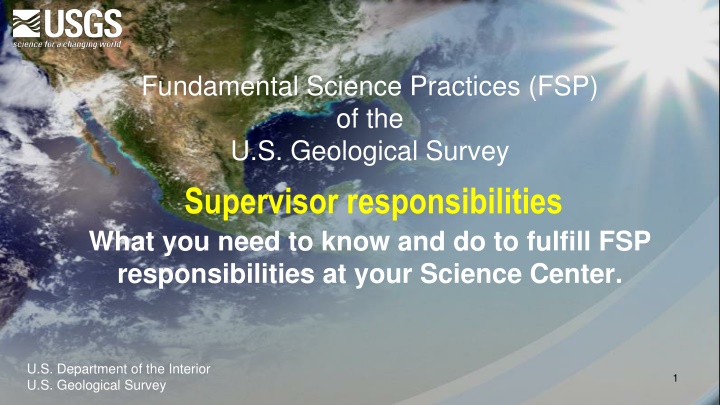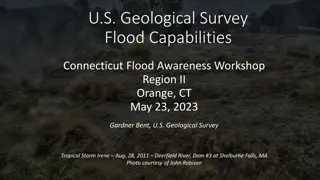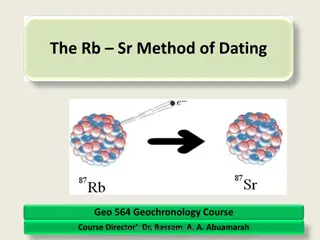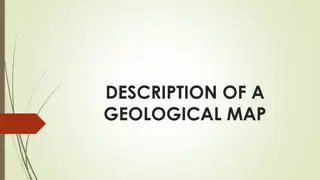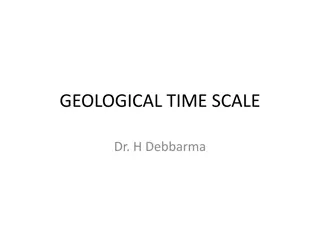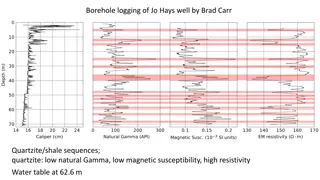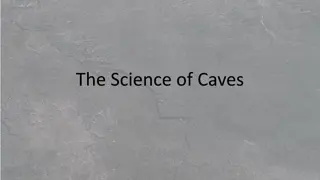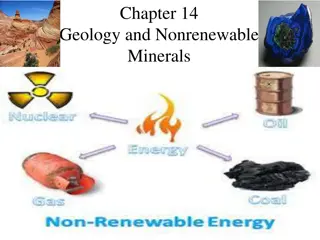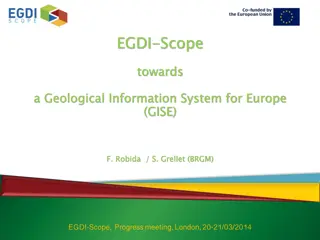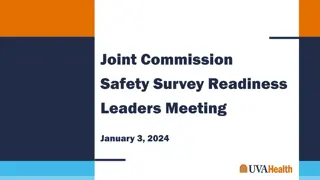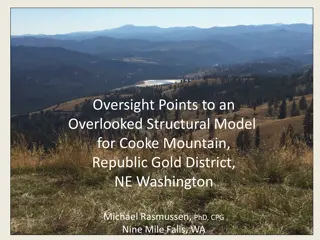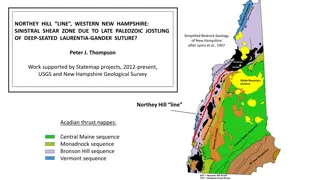Fulfilling FSP Responsibilities at US Geological Survey
Supervisors at the US Geological Survey play a crucial role in overseeing project proposal and plan development, ensuring compliance with Fundamental Science Practices (FSP). This involves managing USGS authors, deciding on research result categorization, releasing data, and adhering to open science requirements. Key elements include the USGS Information Product Data System, data management plans, and maintaining the integrity of USGS science.
Uploaded on May 14, 2024 | 1 Views
Download Presentation

Please find below an Image/Link to download the presentation.
The content on the website is provided AS IS for your information and personal use only. It may not be sold, licensed, or shared on other websites without obtaining consent from the author.If you encounter any issues during the download, it is possible that the publisher has removed the file from their server.
You are allowed to download the files provided on this website for personal or commercial use, subject to the condition that they are used lawfully. All files are the property of their respective owners.
The content on the website is provided AS IS for your information and personal use only. It may not be sold, licensed, or shared on other websites without obtaining consent from the author.
E N D
Presentation Transcript
Fundamental Science Practices (FSP) of the U.S. Geological Survey Supervisor responsibilities What you need to know and do to fulfill FSP responsibilities at your Science Center. U.S. Department of the Interior U.S. Geological Survey 1
What you will learn in this FSP module What is your role in overseeing project proposal / project plan development The importance of the USGS Information Product Data System (IPDS) in documenting FSP compliance Your FSP responsibilities related to managing USGS authors What is OMB1influential and where and when you as supervisor must decide if research results from scientists you supervise should be placed in the influential category Requirements and responsibilities for releasing the data associated with USGS science Open Science requirements related to grants or contracts to entities outside of the USGS 1Office of Management and Budget (OMB) 2
Your responsibilities in overseeing project proposal / project work plan development To ensure project work plans meet FSP requirements, they must include: the methods or techniques used to collect, process, and analyze data; the structure of the output; description of accuracy and precision; standards for metadata; and methods of quality assurance are described; a data management plan (DMP) is part of the project plan. 3
The data management plan A separate data management plan must be part of the project work plan. The DMP must include standards and intended actions as appropriate to the project for acquiring, processing, preserving, publishing/releasing, describing, and managing the quality of, backing up, securing the data holdings, who owns the data and an assessment of proprietary aspects of data management for release; The DMP may include a data sharing agreement to determine who is responsible for the data at the end of the project if there are multiple partners. 4
USGS stands behind its science Unlike a number of other Federal agencies that place disclaimers on their scientists works separating the agency from the work of the agency scientist, the USGS firmly stands behind and is willing to defend the information products published by USGS scientists. The USGS can do this because all publications authored by USGS scientists follow FSP. Documenting this in IPDS establishes an administrative record demonstrating adherence to FSP and thereby procedurally demonstrating the quality and integrity of our science. 5
IPDS and FSP compliance For example if your publication becomes the subject of litigation, it is the IPDS routing record that provides your first line of defense demonstrating you have followed the correct USGS administrative procedures. IPDS documents and tracks the timing sequence of the review, approval, and dissemination of information products. The routing record in IPDS is the official record demonstrating compliance with USGS FSP. Improper routing sequence in IPDS violates FSP and provides an opening to challenge USGS science. Most litigation challenging our science is presented in front of an administrative law judge, who often has little science background, but a great depth of knowledge in administrative law. Regardless of the robustness of your science, if a challenging party can demonstrate you have not followed the proper administrative sequence required by FSP your science can be discredited. 6
Oversight of USGS authors As first line supervisor of USGS authors you are responsible for certifying the correctness of the IPDS administrative record that documents compliance with FSP. That is your sign off in IPDS certifies key elements of FSP have been met and should occur only after you have confirmed this is true. 7
Oversight of USGS authors the details Here is what you must do before a draft manuscript moves to peer review: Read it and only then, Determine if the manuscript is ready for peer review, Determine if the manuscript should be classified as OMB influential and if so follow proper USGS Peer Review Agenda procedures, Choose peer reviewers for USGS initiated peer reviews or confirm authors suggested peer reviewers have no real or implied conflict of interest. Only after these steps have been completed may you move the manuscript forward in IPDS to allow the author to begin the peer review process 8
Is the manuscript ready for peer review? Is the manuscript well written? Are data collection and analysis methods well documented and scientifically sound? If the Data are USGS funded, are they available to the public either in tables in the body of the manuscript, through a USGS web data service such as NWIS or through a separate data release? Are the conclusions supported by the data and analysis? Are recommendations science based and within USGS policy guidelines (refer to guidance)? Only after these are confirmed should you sign off in IPDS allowing the peer review to begin. 9
What is OMB influential? There are two categories of influential as defined by the OMB: 1. Influential Scientific information - "...scientific information the agency reasonably can determine will have or does have a clear and substantial impact on important public policies or private sector decisions." 2. Highly Influential Scientific Assessment - "...the dissemination could have a potential impact of more than $500 million in any 1 year on either the public or private sector or that the dissemination is novel, controversial, or precedent setting, or has significant interagency interest." OMB requires agencies to post on a public Web site, a list of all information products that contain influential information, along with supporting peer review plans and related summaries of peer review comments. Refer to: https://internal.usgs.gov/peer_review/index.html for more details. 10
If OMB influential, Bureau Approval must occur before sending to journal Summaries of substantive peer review comments are posted on the USGS Peer Review Agenda web site and therefore are not anonymous Peer reviewers must be notified prior to initiation of peer review that their peer review comments will be made public. This violates journal anonymous peer review requirements and hence USGS initiated peer review and Bureau approval must occur prior to journal submission 11
Responsibilities after peer review and reconciliation has occurred (SM502.3) Ensure all peer reviews, peer review reconciliations, and the manuscript modified as a result of peer review are placed in IPDS. Evaluate adequacy of peer review comments and confirm the author has prepared a final draft of the product that is suitable to submit for approval. Inform the Science Center Director about any product content that might be highly visible, sensitive, or controversial and identify any internal or external groups or agencies that might have particular and/or immediate interest in the product. Only after these three steps have occurred may the product be moved forward in IPDS to the Science Center Director for further action. Only after Bureau Approval has occurred may a revised manuscript responding to USGS and journal peer reviews be returned to the journal for consideration to publish. In the case of journal publication it is only after journal acceptance that the final accepted manuscript is placed in IPDS to complete the record and to facilitate public access after the 12 month embargo period. 12
Open Science requirements related to proposals associated with grants or contracts to entities outside of the USGS Proposals submitted to USGS must include a supplementary document of no more than two pages labeled "Data Management Plan" (DMP). the types of data, samples, physical collections, software, curriculum materials, and other materials to be produced in the course of the project; the standards to be used for data and metadata format and content (where existing standards are absent or deemed inadequate, this should be documented along with any proposed solutions or remedies); policies for access and sharing including provisions for appropriate protection of privacy, confidentiality, security, intellectual property, or other rights or requirements; provisions for re-use, re-distribution, and the production of derivatives; and plans for archiving data, samples, and other research products, and for preservation of free public access to them. Grant recipient is responsible for ensuring that the USGS principal investigator (PI) managing the grant/project is provided a digital version, preferably as a MS Word DOCx file, of every accepted manuscript upon acceptance for publication by the journal. The PI is responsible for adding this document to IPDS as an Extramural Publication to facilitate required free public access. 13
Consequences Violation of USGS Fundamental Science Practices by USGS employees may be considered a breach of scientific conduct. Consequences for not following FSP and other Bureau policies are guided by the U.S. Department of the Interior Handbook on Charges and Penalty Selection for Disciplinary and Adverse Actions. 14
FSP Training Resources Additional training materials associated with FSP are available as short modules addressing requirements for specific information product types, conditions, and responsibilities. These modules are available on the FSP training page. 15
Questions? Questions related to USGS Fundamental Science practices should be addressed first to your USGS Bureau Approving Official (BAO) or to the USGS Fundamental Science Practices Advisory Committee at GS_FSPAC@usgs.gov 16
Assessing your understanding The following is a quiz to access your understanding of this material. 100% is a passing score. Print the results at the end of the test and save as PDF. This is the proof you have successfully completed the training module. You may take the test over as necessary to achieve a passing score. 17
Properties On passing, 'Finish' button: Goes to next slide On failing, 'Finish' button: Goes to next slide Allow user to leave quiz: After user has completed quiz User may view slides after quiz: Any time Show quiz in menu as: Multiple Items Edit in Quizmaker Edit Properties
Fundamental Science Practices of the U.S. Geological Survey Return to main training landing page by clicking here.
